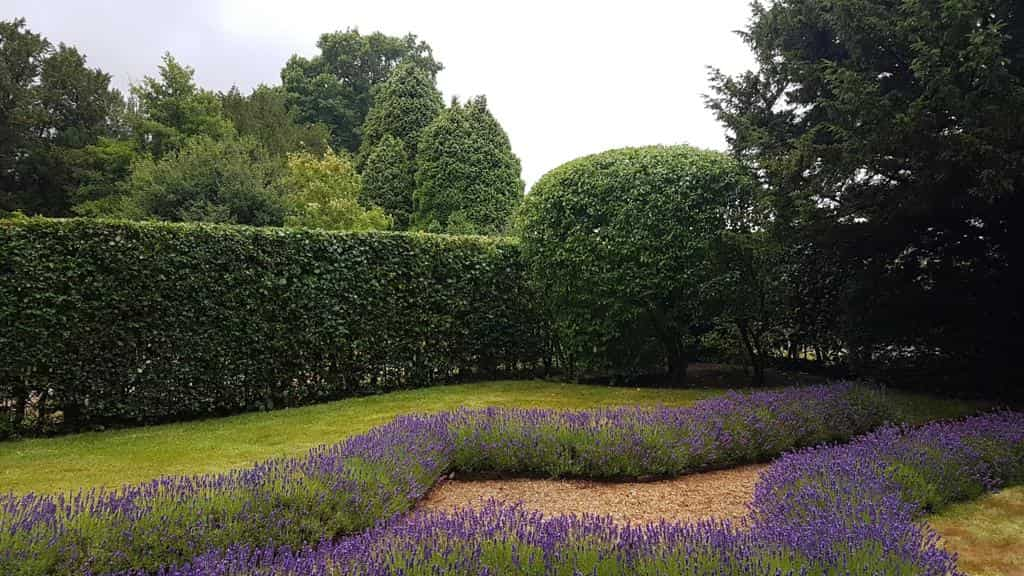When a tree is felled, the stump that remains often poses a challenge for homeowners in Woodford, Essex. While removing the main trunk of the tree is a significant step, many people are unaware that tree stumps can sometimes “resurface.” This phenomenon can be frustrating, as the stump appears to regrow or sprout new shoots, seemingly defying the efforts made to remove it. In this blog post, we will explore why some tree stumps resurface and, more importantly, how to permanently remove them to restore your landscape.
1. Why Do Tree Stumps “Resurface”?
Understanding why tree stumps may re-sprout is crucial to addressing the problem effectively. Several factors contribute to this issue, and each requires a different approach to ensure a permanent solution.
Survival Mechanism of the Tree
When a tree is cut down, the stump often contains a substantial amount of living tissue and roots that remain active. The tree’s roots are still in the ground, and the stump may have stored energy in its roots, allowing it to attempt to regenerate.
- Root reserves: The remaining roots may contain enough energy for the tree to send up new shoots, especially in the case of species like willows, poplars, and birches.
- Dormant buds: Even if the main trunk is removed, there may be dormant buds on the stump that can sprout if the tree is stressed or disturbed.
These shoots are often referred to as “suckers,” and they can emerge from the stump if the root system is still alive. This regrowth is an attempt by the tree to survive, but it typically leads to the growth of small, weak shoots rather than a full tree.
Improper Stump Removal
In some cases, stumps “resurface” because the original stump removal was not thorough enough. If the stump was left too high above the ground or the roots were not fully dealt with, there’s a higher chance of regrowth.
- Leftover roots: When tree roots are not completely removed or treated, they may remain in the ground, potentially sending up new shoots in the future.
- Stump grinding issues: Even if the stump is ground down, the root system may not be fully eradicated, and regrowth can still occur from remaining root fragments.
Without a full stump removal process, there’s a greater likelihood that the stump will regrow over time.
2. How to Permanently Remove Tree Stumps
To ensure that your tree stump does not resurface, it’s essential to use a method that completely eradicates the stump and roots. Below are some of the most effective methods for permanently removing tree stumps.
Stump Grinding
Stump grinding is one of the most efficient methods of removing a tree stump. This process involves using a specialised machine that grinds the stump down to below ground level, removing both the visible portion and a significant portion of the roots.
- Complete removal: When done correctly, stump grinding can remove most of the stump and its root system, making it very unlikely that the stump will resurface.
- Faster regrowth control: With the roots removed, there’s no chance for the tree to regrow, as it no longer has a viable root system.
Stump grinding is often the most effective solution, especially for larger trees or those with extensive root systems.
Chemical Stump Removal
Chemical removal involves applying a stump removal solution to the remaining stump. These chemicals break down the wood over time, causing it to decompose. However, this method takes several months to fully take effect and may not be ideal for all situations.
- Slower process: While effective, this method is slower and requires ongoing monitoring to ensure the stump is fully decomposed.
- Environmental considerations: Make sure to choose a chemical that is safe for the surrounding environment and doesn’t affect nearby plants or trees.
For smaller stumps, chemical removal can be a viable option, but it requires patience and a long-term commitment.
Manual Removal
Manual removal is the most labour-intensive method and involves digging around the stump to expose the roots, then cutting and removing them. This process can be difficult and time-consuming, especially if the tree had a deep or extensive root system.
- Thorough removal: If done properly, manual removal ensures that all roots and the stump are completely extracted, preventing regrowth.
- Physically demanding: This method requires significant physical effort and the proper tools, such as a shovel, axe, and root saw.
Manual removal is ideal for small to medium-sized stumps, particularly those in residential gardens with accessible root systems.
Burning the Stump
In some cases, burning the stump can be an effective way to remove it, especially if the stump is already dry or partially decomposed. This method is most effective for smaller stumps but should be handled with caution.
- Caution required: Burning a stump should only be done in accordance with local regulations and safety measures. Always ensure you have the proper permits and precautions in place before attempting this method.
- Effective for dry stumps: When the stump is dry, it can burn down to the roots, effectively eliminating the stump and roots in one go.
Burning is an effective but potentially dangerous method that requires careful planning and safety measures.
3. Preventing Future Stump Resurfacing
Once you’ve dealt with the stump, it’s important to take steps to ensure that it doesn’t resurface in the future. Here are a few tips to prevent this issue from occurring again:
- Complete root removal: Ensure that the entire root system is dealt with to prevent new growth from emerging.
- Regular monitoring: Even after the stump is removed, periodically check for new shoots or regrowth.
- Soil treatment: After removal, consider treating the soil around the stump to discourage any remaining roots from sprouting.
Conclusion
While tree stumps are often a persistent problem, they don’t have to be. If your tree stump has resurfaced or you’re concerned about it doing so, it’s crucial to use the proper methods for full removal. Whether through stump grinding, chemical removal, or manual digging, ensuring that the roots are completely eradicated is the key to preventing regrowth.
At Woodford Tree Surgeons, we specialise in expert stump removal services in Woodford, Essex. Our experienced team can safely and effectively remove tree stumps and ensure they do not resurface. Contact us today for professional tree surgery and stump removal services that will keep your property looking neat and free of unwanted growth.
Call us on: 020 3917 4991
Click here to find out more about Woodford Tree Surgeons
Click here to complete our contact form and see how we can help with your tree care needs.

